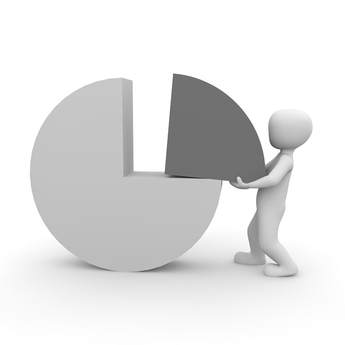|
Introduction The idea of sampling is fundamental in data science and even though it is taught in every data science book or course out there, there is still a lot to be learned about it. The reason is that sampling is a very deep topic and just like every other data-related topic out there, conventional Statistics fails to do it justice. The reason is simple: good quality samples come about by obtaining an unbiased representation of a population and this is rarely the case from strictly random samples. Also, the fact that Statistics doesn’t offer any metric whatsoever regarding bias in a sample, doesn’t help the whole situation. The Index of Bias (IB) of a Sample There are two distinct aspects of a sample, its bias and its diversity. Here we’ll explore the former, as it is expressed in the two fundamental aspects of a distribution, its central point and its spread. For these aspects we’ll use two robust and fairly stable metrics, the median and the inter-quartile range, respectively. The deviation of a sample in terms of these metrics, with each deviation normalized based on the maximum deviation possible for the given data, yields two metrics, one of the central point and one for the spread. Each metric takes values between 0 and 1, inclusive. The average of these metrics is defined as the index of bias of a sample and takes values in the [0, 1] interval too. Note that the index of bias is always in relation to the original dataset we take the sample from. Although the above definition applies to one-dimensional data only, it can be generalized to n-dimensional data too. For example, we can define the index of bias of a dataset comprising of d dimensions (features) as the arithmetic mean of the index of bias of each one of its features. IB Scores for Various Samples Strictly random samples tend to have a fairly high IB score, considering that we expect them to be unbiased. That’s not to say that they are always very biased, but they are definitely in need of improvement. Naturally, if the data we are sampling is multi-dimensional, the chances of a bias are higher, resulting to an overall biased sample. Samples that are engineered with IB in mind are more likely to be unbiased in that sense. Naturally, this takes a bit of effort. Still, given enough random samples, it is possible to get a good enough sample that is unbiased based on this metric. In the attached file I include the IB scores of various samples, for both a random sampling process (first column) and a more meticulous one that aims to obtain a less biased sample (second column). Note that the latter did not use the IB metric in its algorithm, though a variant of it that makes use of that metric is also available (not free though). Also, you don’t need to be an expert in statistical tests to see that the second sampling method is consistently better than the first one. Finally, I did other tests on different data, and in every case, the results were very similar. Conclusions Hopefully, this small experiment goes on to show how sampling is not a trivial problem as it is made out to be by those who follow some old-fashioned paradigm for data analytics. Despite its simplicity, sampling has a lot of facets that need to be explored and understood, before it can be leveraged as a data science technique. After all, what good is an advanced model if the data it is trained on is biased? I believe we owe it to ourselves as data scientists to pay attention to every part of the data science process, including the less interesting parts, such as sampling.
0 Comments
Your comment will be posted after it is approved.
Leave a Reply. |
Zacharias Voulgaris, PhDPassionate data scientist with a foxy approach to technology, particularly related to A.I. Archives
April 2024
Categories
All
|
||||||

 RSS Feed
RSS Feed